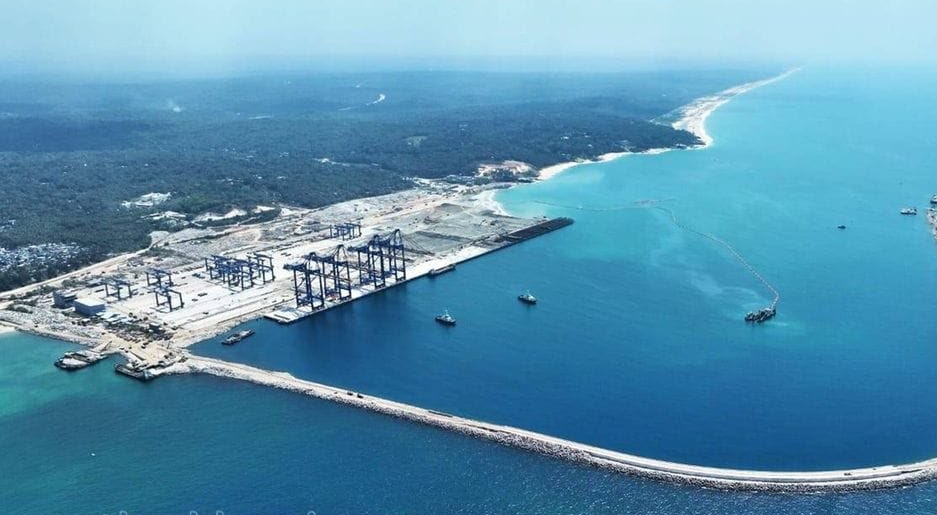A major milestone has been reached in the development of Vizhinjam Port with the completion of its breakwater.
The breakwater, a structure designed to protect the port’s berth from waves by placing stones in the sea, is now a reality.
For the 2,950-metre-long breakwater, 7 million tonnes of granite stones were deposited in the sea, placed at depths ranging from 14 to 20 metres.
At the base, the stones cover an area of 100 to 120 metres, tapering to about 10 metres wide at the top. This large triangular wall will serve as a protective shield for the port.
Construction of the breakwater began in 2016 and, over the past eight years, has overcome various challenges, including climate change.
Initially, Cyclone Ockhi caused significant disruptions, destroying part of the breakwater. Later, a shortage of rocks was resolved by sourcing stones from quarries in Kerala and Tamil Nadu.
The majority of the breakwater was constructed between 2021 and 2024. Due to unfavorable sea conditions during the monsoon, construction was only possible from October to April each year. In 2022-23, work was halted for 120 days due to protests by fishermen.
Loading points were established in Kollam and Muthalapozhy to collect the stones, which were then transported to the placement site via barges.
At Vizhinjam, stones were gathered at three points. Tipper lorry trucks and barges transported the stones, with barges used for placement in areas deeper than 5 metres, while lorries were used to place stones above them. A total of twelve barges were deployed for the construction.
In the upcoming phase, accropode will be laid around the breakwater to provide additional protection. A 10-metre-wide concrete road will also be built on top of the breakwater. Similarly, an additional 900 metres of breakwater will be constructed in next phase, extending its total length to 3.9 kilometres. No other port in the country boasts a breakwater of 2.95 kilometres constructed at such depths

